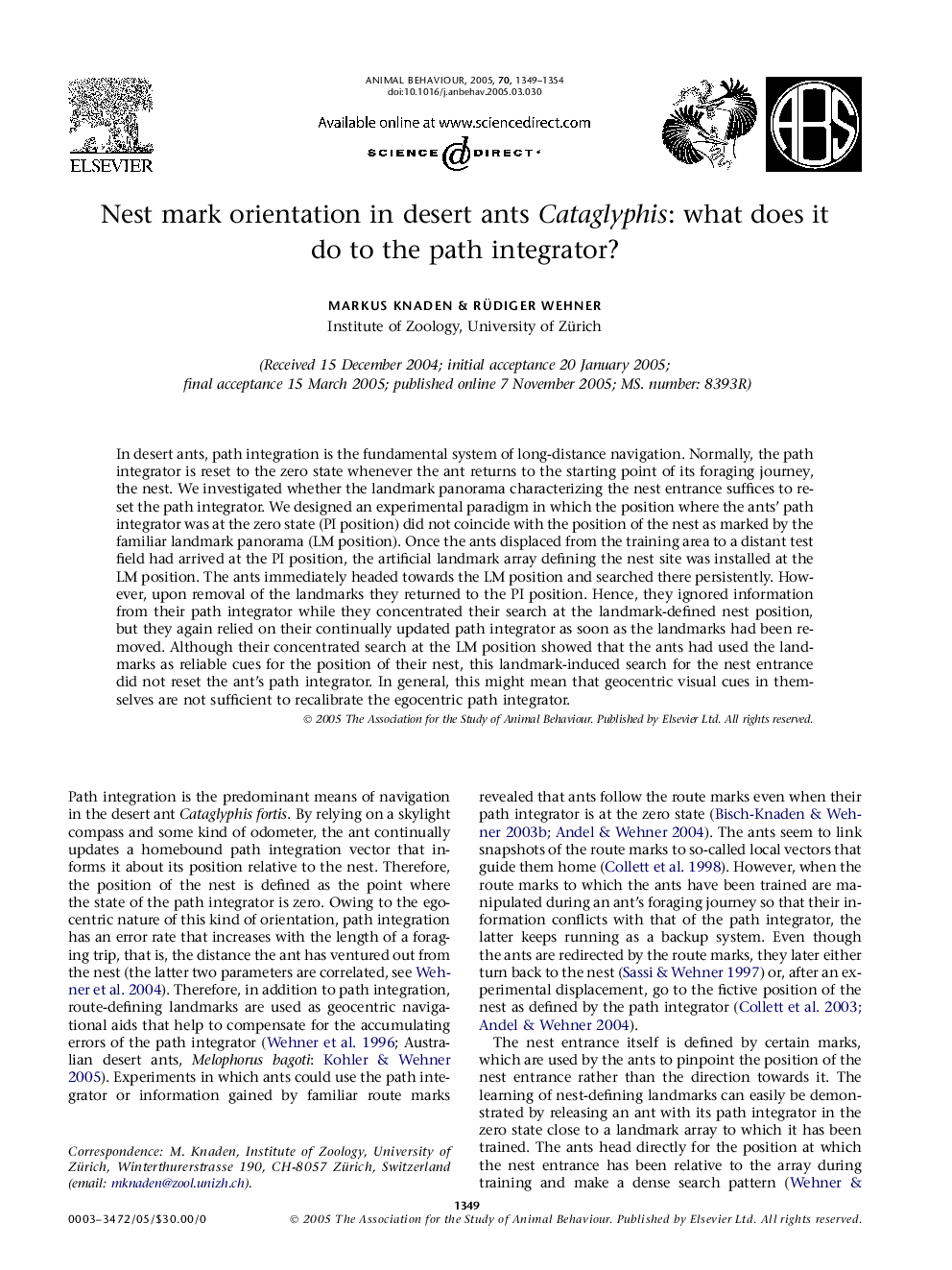| Article ID | Journal | Published Year | Pages | File Type |
|---|---|---|---|---|
| 8971840 | Animal Behaviour | 2005 | 6 Pages |
Abstract
In desert ants, path integration is the fundamental system of long-distance navigation. Normally, the path integrator is reset to the zero state whenever the ant returns to the starting point of its foraging journey, the nest. We investigated whether the landmark panorama characterizing the nest entrance suffices to reset the path integrator. We designed an experimental paradigm in which the position where the ants' path integrator was at the zero state (PI position) did not coincide with the position of the nest as marked by the familiar landmark panorama (LM position). Once the ants displaced from the training area to a distant test field had arrived at the PI position, the artificial landmark array defining the nest site was installed at the LM position. The ants immediately headed towards the LM position and searched there persistently. However, upon removal of the landmarks they returned to the PI position. Hence, they ignored information from their path integrator while they concentrated their search at the landmark-defined nest position, but they again relied on their continually updated path integrator as soon as the landmarks had been removed. Although their concentrated search at the LM position showed that the ants had used the landmarks as reliable cues for the position of their nest, this landmark-induced search for the nest entrance did not reset the ant's path integrator. In general, this might mean that geocentric visual cues in themselves are not sufficient to recalibrate the egocentric path integrator.
Related Topics
Life Sciences
Agricultural and Biological Sciences
Animal Science and Zoology
Authors
Markus Knaden, Rüdiger Wehner,
